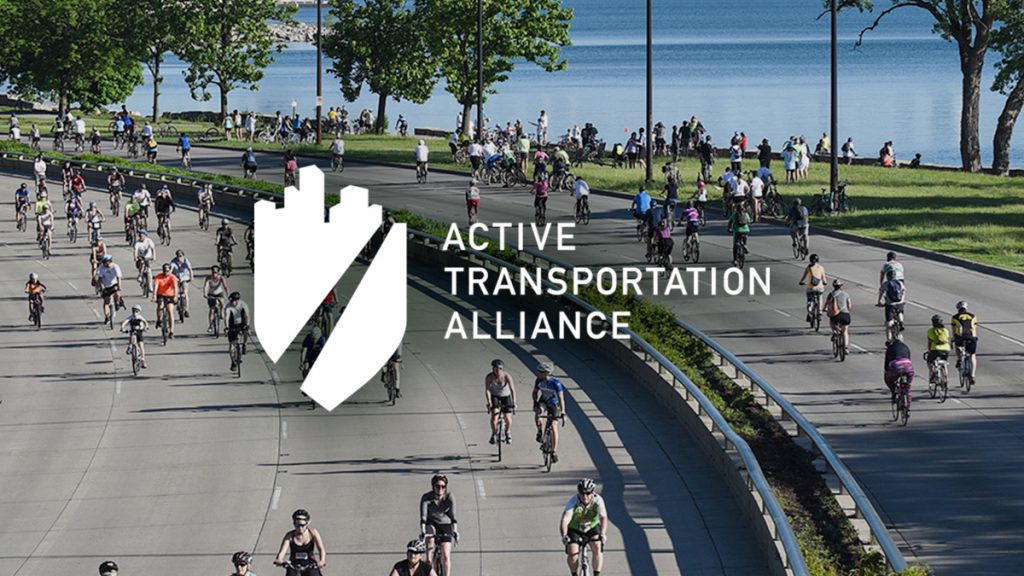Getting around the Midwest in multimodal style is about to get easier. Beginning tomorrow, September 6, bikes will be welcome on one of the Amtrak trains connecting Michigan and Chicago.
The Blue Water Line, which operates daily between Port Huron, Michigan and Chicago, travels between southern Michigan and Chicago’s Union Station. It passes through East Lansing and Kalamazoo, Michigan — cities that host two large state universities — as well as several other bike friendly communities.
| Director of Government Affairs for Amtrak’s Central Region, Derrick James, poses with a prototype of the modified railcar that provides secure storage for four bikes. |
Train riders will be able to walk their bikes onto the trains, which will be stored on racks that are positioned in modified café cars. The modified cars can securely carry up to four bikes per train; riders can lock their bikes to provided brackets.
A $10 fee will be charged per bike, in addition to the regular cost of the rail fare. Riders pay this fee when purchasing a ticket online or at an Amtrak station.
“We’ve worked with the cycling community to modify these railcars so bikes can be secured without disassembly,” said Derrick James, director of government affairs for Amtrak’s central region and a former Active Trans Board of Directors vice-president. “We look forward to measuring the success of this service with an eye to expansion to additional routes across our national network.”
The addition of bike racks in modified cars comes to the Blue Water Line earlier than expected. When Active Trans first reported Amtrak's efforts to get bikes on the trains earlier this year, the estimated start date was originally set for spring 2014.
Thanks to James’ work as an Amtrak liaison to the bicycling community, the efforts of the League of Michigan Bicyclists and pressure from the Michigan Department of Transportation, intermodal transit in Michigan will be easier starting this week.
Amtrak already offers walk-on bike service to other trains whose routes service Chicago, including lines in Illinois and Missouri, in unmodified railcars. With the addition of the Blue Water Line, even more transit connectivity has been created throughout the Midwest.

